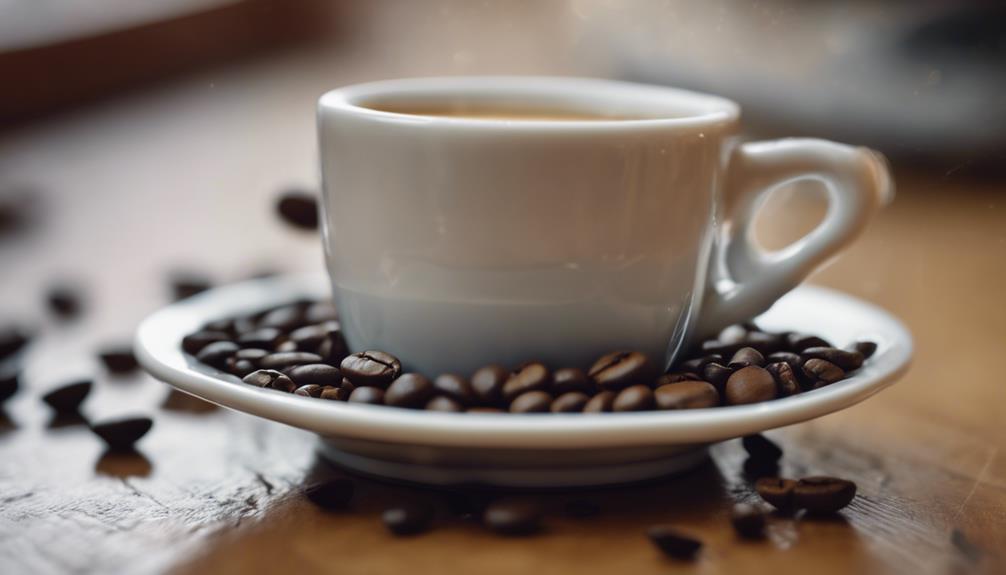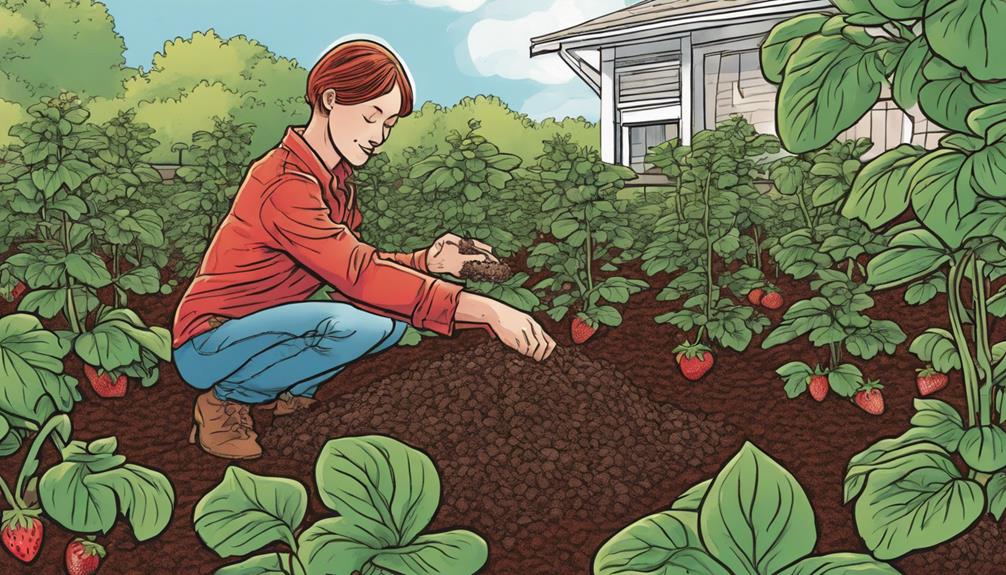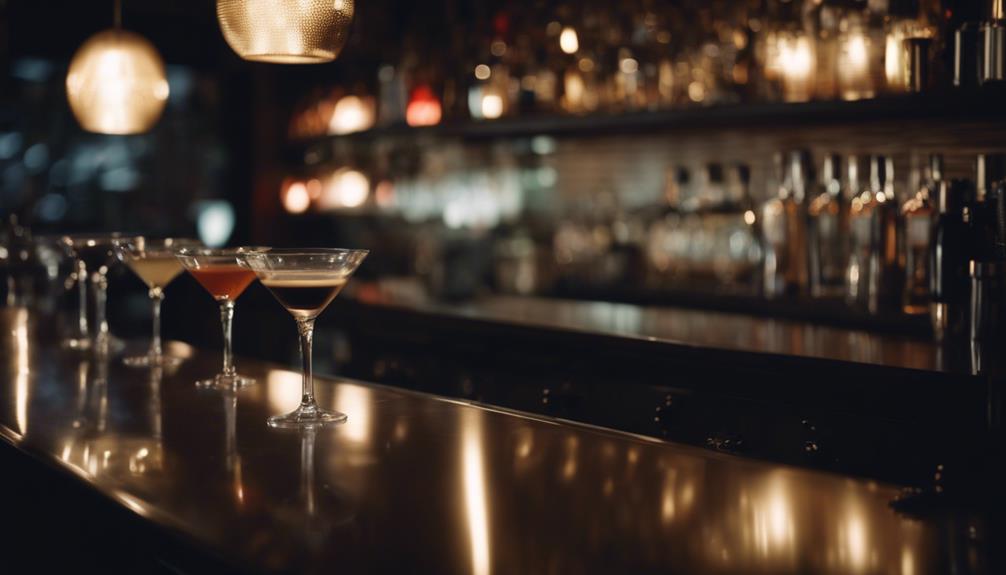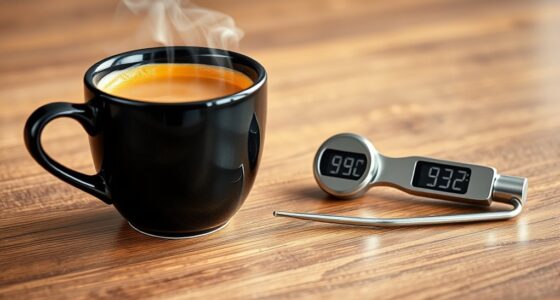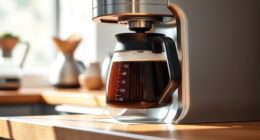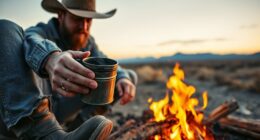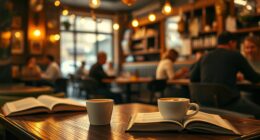You are likely to receive approximately 63-75 milligrams of caffeine from a single shot of espresso, but the exact amount can vary depending on factors such as the type of coffee beans used and the roast level. A double shot contains around 126 milligrams of caffeine, and espresso has a higher caffeine concentration than regular coffee. The brewing method, amount of coffee grounds, and brand of coffee also influence caffeine levels. With so many variables at play, it is evident that comprehending caffeine content in espresso extends beyond a mere number – and there is more to the narrative.
Key Takeaways
- A single shot of espresso typically contains 63-75 milligrams of caffeine, depending on the brand and type of coffee beans used.
- The caffeine content of an espresso shot can vary significantly, with some shots containing as little as 50 milligrams or as much as 100 milligrams.
- The ideal brewing conditions, including water temperature and extraction time, can affect the amount of caffeine extracted from the coffee grounds.
- The type of coffee beans used, such as Arabica or Robusta, can also impact the caffeine content, with Robusta beans generally containing more caffeine.
Espresso Basics and Preparation
When you brew espresso, you're fundamentally forcing hot water through finely-ground coffee, which results in a concentrated beverage that's rich in flavor and caffeine.
To get the perfect espresso shot, you need to make certain you're using the right grind size – fine, similar to table salt. This allows for proper extraction of flavors and caffeine during brewing.
Next, verify your espresso machine is set to the ideal brewing conditions: a water temperature between 190°F and 205°F and an extraction time of 25 to 30 seconds. This will give you the best flavor profile in your brewed coffee.
Remember, the goal is to produce a shot that's around 1 ounce in volume, which will contain a specific amount of caffeine.
Caffeine Content in Espresso and Coffee
You're likely curious about the amount of caffeine that ends up in your espresso shot compared to a regular cup of coffee. When it comes to caffeine content, there are some key differences between espresso and brewed coffee.
Here are some key points to evaluate:
A single shot of espresso typically contains about 63 mg of caffeine per 1 ounce, while a double shot has approximately 126 mg of caffeine.
In comparison, an 8-ounce cup of brewed coffee generally contains between 96 to 128 mg of caffeine, depending on brewing method and coffee type.
The caffeine concentration in espresso is higher, with about 40 mg of caffeine per ounce, compared to regular brewed coffee, which averages around 10-16 mg per ounce.
Espresso's preparation method enhances caffeine extraction, yielding a more concentrated beverage compared to brewed coffee.
Factors like coffee bean type, roast level, and brewing time can influence caffeine content in both espresso and coffee.
Factors Influencing Caffeine Levels
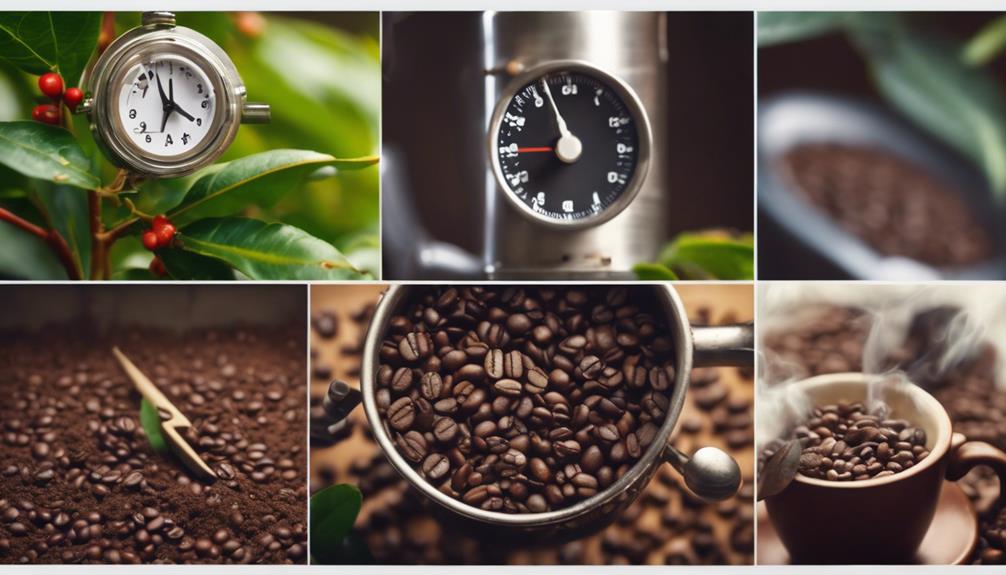
The brand of coffee you use can considerably impact the amount of caffeine in your espresso shot, with some brands packing a higher caffeine punch due to their unique sourcing and processing methods.
But that's not all – the type of coffee beans you choose also plays a significant role. For instance, if you opt for Robusta beans, you can expect about twice as much caffeine as you'd from Arabica beans.
The roast type is another factor to contemplate, as darker roasts tend to have lower caffeine levels due to the prolonged roasting process breaking down caffeine molecules.
When it comes to brewing, the amount of coffee grounds you use directly influences the amount of caffeine extracted. More coffee grounds mean higher caffeine levels, so be mindful of your grind.
The brewing method itself is also vital, as espresso provides a higher caffeine concentration per ounce compared to regular coffee.
By understanding these factors, you can take control of your caffeine intake and customize your espresso shot to your liking.
Whether you're a caffeine junkie or just looking for a gentle boost, it's important to know what goes into your daily cup.
Caffeine in Espresso Drinks
Now that you know how much caffeine is in a single shot of espresso, you're probably wondering how that amount changes when it's part of a larger drink.
You'll find that espresso drinks like lattes and cappuccinos have varying levels of caffeine depending on their size, with some drinks packing a bigger caffeine punch than others.
As you explore the world of espresso drinks, you'll see that sizes, ingredients, and even the number of shots used can greatly impact the amount of caffeine you're getting.
Espresso Drink Caffeine Levels
On average, your typical espresso drinks pack a caffeine punch, with a single shot of espresso containing approximately 63-75 mg of caffeine. But what about the caffeine levels in different espresso drinks? Let's break it down:
Espresso Drink Caffeine Levels:
Cappuccinos and lattes typically have 75 mg of caffeine for short/tall sizes and 150 mg for grande/venti sizes, depending on the number of espresso shots used.
Mocha drinks can have 90 mg of caffeine for short/tall sizes and up to 180 mg for venti sizes due to the addition of chocolate.
Americanos have varying caffeine content, ranging from 75 mg for short sizes to 300 mg for venti sizes, based on the number of espresso shots included.
Decaf espresso options yield considerably less caffeine, with a single shot containing approximately 8 mg and a double shot about 16 mg.
Double shots (doppio) of espresso contain around 150 mg of caffeine, making them a popular choice for those who need an extra boost.
Caffeine in Lattes and More
You'll find that lattes, cappuccinos, and other espresso-based drinks can pack a considerable caffeine punch, with amounts varying depending on the type and size of your drink.
A typical latte or cappuccino contains 75 mg of caffeine for short or tall sizes, which is equivalent to one shot of espresso. However, if you upgrade to a grande or venti size, you'll get two shots of espresso, doubling the caffeine content to 150 mg.
Mocha drinks follow a similar pattern, with 90 mg of caffeine for short or tall sizes and 180 mg for venti sizes, thanks to the added chocolate.
Meanwhile, Americanos can vary greatly, with 75 mg for short sizes and up to 300 mg for venti sizes, depending on the number of espresso shots used.
When ordering, it's crucial to take into account the serving size and brewing method to gauge your total caffeine intake.
As you can see, the number of shots used plays a considerable role in determining the caffeine content of your espresso drink. If you prefer a stronger caffeine kick, then opting for a double espresso over a single can make a significant difference. For example, a single shot of espresso typically contains around 63 milligrams of caffeine, while a double espresso can contain around 125 milligrams. Therefore, the caffeine content of double espresso is nearly double that of a single shot.
Variation in Drink Sizes
With varying drink sizes comes a notable difference in caffeine content, and understanding these differences is key to managing your caffeine intake. As you order your favorite espresso drink, the size of your cup can notably impact the amount of caffeine you consume.
Here's a breakdown of the caffeine content in different espresso drinks and sizes:
- A single shot of espresso contains approximately 75 mg of caffeine, while a double shot contains about 150 mg.
- Cappuccinos and lattes have around 75 mg of caffeine for short/tall sizes and 150 mg for grande/venti sizes.
- Mochas vary from 90 mg for short/tall sizes to 180 mg for venti sizes due to the added chocolate.
- Americanos range from 75 mg for short sizes to 300 mg for venti sizes, depending on the number of espresso shots used.
Perception of Caffeine Effects
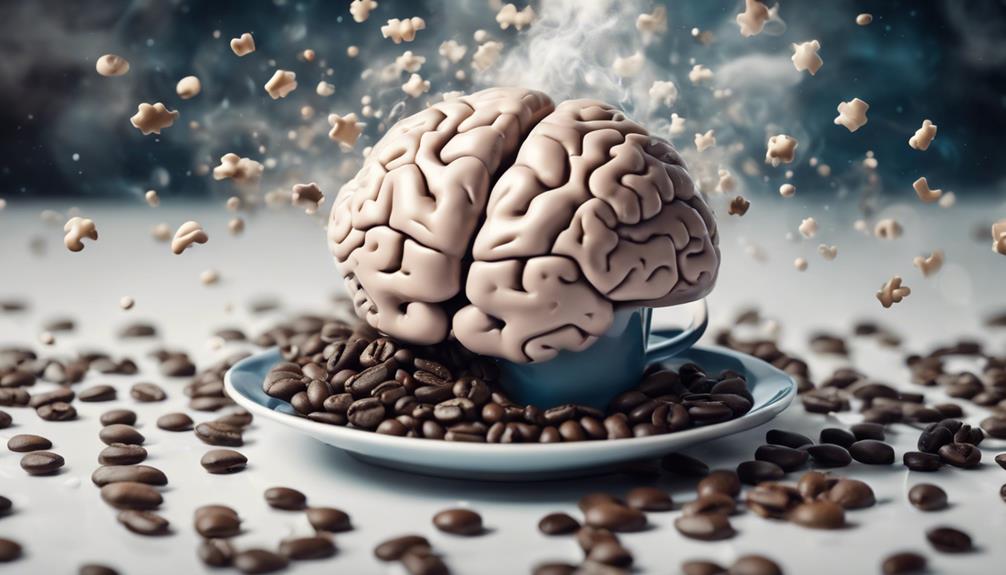
Since you down an espresso shot quickly, you're more likely to feel a sudden, intense jolt from the caffeine. This is because espresso is typically consumed rapidly, whereas a cup of coffee is sipped slowly, allowing the caffeine to be absorbed more gradually. The rapid consumption of espresso enhances the immediate effect of the caffeine on your central nervous system.
| Beverage | Caffeine per Ounce | Average Caffeine Content |
|---|---|---|
| Espresso | 63-75 mg | 63 mg per shot |
| Brewed Coffee | 12-16 mg | 95-200 mg per cup |
| Instant Coffee | 25-100 mg | 25-100 mg per cup |
| Cold Brew | 10-20 mg | 100-200 mg per cup |
| Decaf Coffee | 0-12 mg | 3-12 mg per cup |
Your individual tolerance to caffeine also plays a role in how you perceive its effects. Some people may feel a stronger jolt from a single shot of espresso, while others may not feel as much of an impact. Additionally, psychological factors, such as expecting a boost from espresso, can influence how you perceive the effects of caffeine, potentially leading to a heightened sense of alertness.
Health Recommendations and Safety
As you consider your daily espresso habit, you'll want to know how much caffeine is safe for you to consume.
You should be aware of the recommended daily intake and factors that affect your sensitivity to caffeine, like age and body size.
Safe Daily Intake
You should be aware that the FDA sets a maximum safe daily caffeine intake of 400 mg for healthy adults, a limit that's equivalent to about four 8-ounce cups of brewed coffee. As you enjoy your espresso, it's important to keep this limit in mind to avoid excessive caffeine consumption.
Here are some key points to take into account:
- A single shot of espresso generally contains about 63-75 mg of caffeine, making it a controlled choice for caffeine consumption.
- Consuming two to four 8-ounce cups of brewed coffee is regarded as safe and can fit within the recommended caffeine limits.
- You can enjoy espresso with milk-based drinks like lattes, which may enhance enjoyment while managing overall caffeine intake.
- It's vital to monitor your caffeine consumption, as personal tolerance and sensitivity can vary considerably.
Caffeine Sensitivity Factors
Your individual sensitivity to caffeine plays a significant role in determining how much espresso you can safely consume daily, and it's a factor the FDA considers when setting its recommended daily limits. This sensitivity can vary greatly, with some people experiencing heightened effects at lower doses while others can tolerate much higher amounts without adverse reactions.
| Caffeine Content | Individual Tolerance | Effects |
|---|---|---|
| Low (63 mg) | High | Quick boost, no jitters |
| Medium (125 mg) | Medium | Noticeable energy, some anxiety |
| High (250 mg) | Low | Jitters, rapid heartbeat |
When consuming espresso, you should consider your psychological factors, such as mood and expectations, as they can influence how you perceive the effects of caffeine. This, in turn, affects your individual tolerance levels. To control your caffeine intake, a single shot of espresso can be a strategic choice, providing a quick boost without the higher total caffeine content found in larger servings of brewed coffee. By understanding your unique caffeine sensitivity, you can enjoy the benefits of espresso while minimizing potential side effects.
Healthy Consumption Guidelines
Four hundred milligrams of caffeine, the FDA's daily recommended limit, is roughly equivalent to the amount found in four 8-ounce cups of brewed coffee, making a single shot of espresso a relatively modest contribution to your daily intake.
As you enjoy your espresso, it's important to keep this daily limit in mind to guarantee healthy consumption.
Here are some guidelines to help you make informed choices:
- A single shot of espresso contains approximately 63 mg of caffeine, a controlled amount for those monitoring their intake.
- Consuming two to four 8-ounce cups of brewed coffee is generally considered safe and may provide health benefits.
- Be mindful of espresso drinks that can vary in caffeine content, such as double shots containing around 150 mg.
- Adding milk to your espresso can help moderate caffeine consumption and enhance flavor.
Coffee and Espresso Equipment Essentials
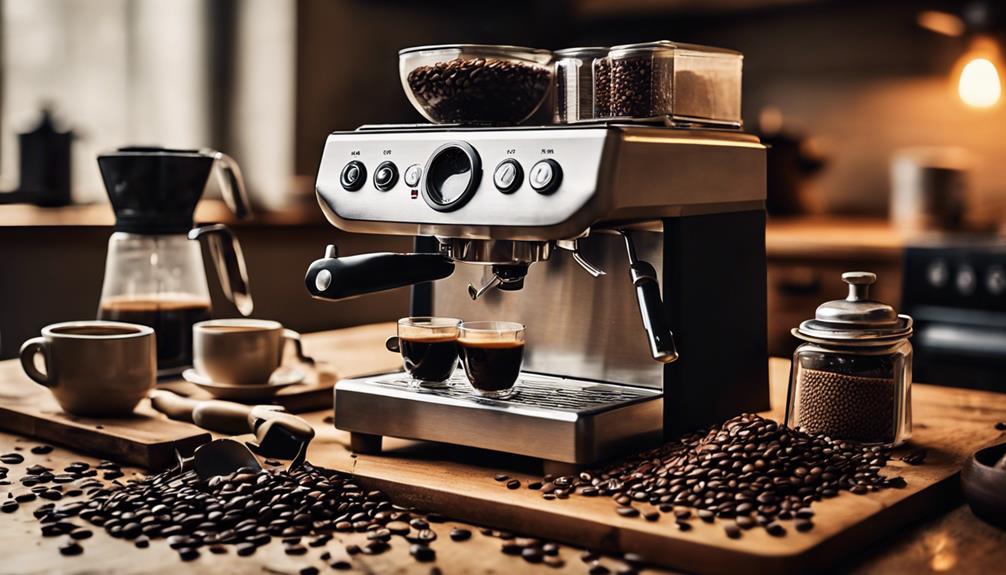
Opting for a high-quality espresso machine is an essential step in perfecting your brewing technique, as it greatly impacts the flavor and caffeine content of your shot. When choosing an espresso machine, consider the type of coffee you want to make and the level of convenience you need. Traditional machines, stovetop Moka pots, and portable espresso makers are popular options.
| Equipment | Characteristics |
|---|---|
| Traditional Espresso Machine | Utilizes pressurized water for efficient flavor and caffeine extraction |
| Stovetop Moka Pot | Convenient and portable, great for home brewing |
| Portable Espresso Maker | Easy to use and clean, perfect for on-the-go espresso |
| High-Quality Grinder | Essential for ideal grind size, affecting caffeine content and flavor |
Caffeine Content Comparison and Insights
Compare the caffeine content of your favorite espresso shots to that of brewed coffee, and you'll find that espresso packs a more concentrated punch. When you look at the numbers, it's clear that espresso has more caffeine per ounce than a cup of brewed coffee.
Here are some key caffeine counts to keep in mind:
- A single shot of espresso typically contains about 63 mg of caffeine per 1 ounce.
- An 8-ounce cup of brewed coffee generally has between 95 to 128 mg of caffeine.
- Starbucks espresso contains approximately 75 mg of caffeine per 0.75 ounces.
- The caffeine content in brewed coffee can vary greatly based on factors like the type of bean, roast level, and brewing method.
With these numbers in mind, it's no wonder that espresso provides a quick and intense caffeine boost. The rapid consumption of espresso leads to quicker caffeine absorption, which can enhance the perceived effects compared to the slower sipping of regular brewed coffee.
Frequently Asked Questions
How Much Caffeine Is in a Single Shot of Espresso?
You're wondering how much caffeine is in a single shot of espresso? Typically, it's around 63 mg per 1-ounce serving, but the amount can vary from 29 to 100 mg depending on factors like bean type and roast level.
Is 2 Shots of Espresso a Lot of Caffeine?
You're wondering if 2 shots of espresso is a lot of caffeine? Honestly, it's moderate – comparable to a cup of brewed coffee. But for you, it might feel like a lot, depending on your sensitivity to caffeine.
Is 1 Shot of Espresso Equal to 1 Cup of Coffee?
Coincidentally, you're wondering if 1 shot of espresso equals 1 cup of coffee, but surprisingly, it doesn't – you'd need about 1.5 shots to match the caffeine content of a standard 8-ounce cup of brewed coffee.
Is 7 Espresso Shots Bad?
You're wondering if 7 espresso shots are bad for you, and the answer is yes, it's excessive. Consuming that much caffeine daily can lead to jitteriness, insomnia, and dependence, exceeding the FDA's recommended daily limit.
Conclusion
As you now know the secrets of espresso's caffeine kick, you're equipped to navigate the world of coffee like a seasoned connoisseur.
But remember, with great power comes great responsibility – just like Spiderman's Uncle Ben, too much caffeine can be a villain.
So, brew wisely and indulge in moderation, lest you fall prey to the dark side of the coffee force.
